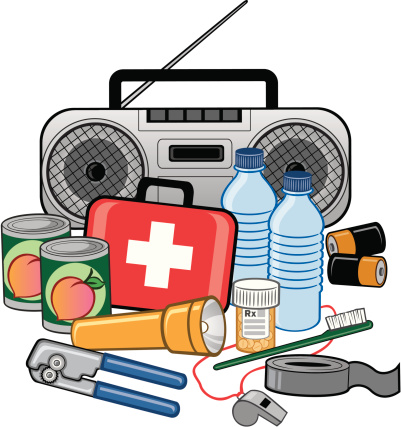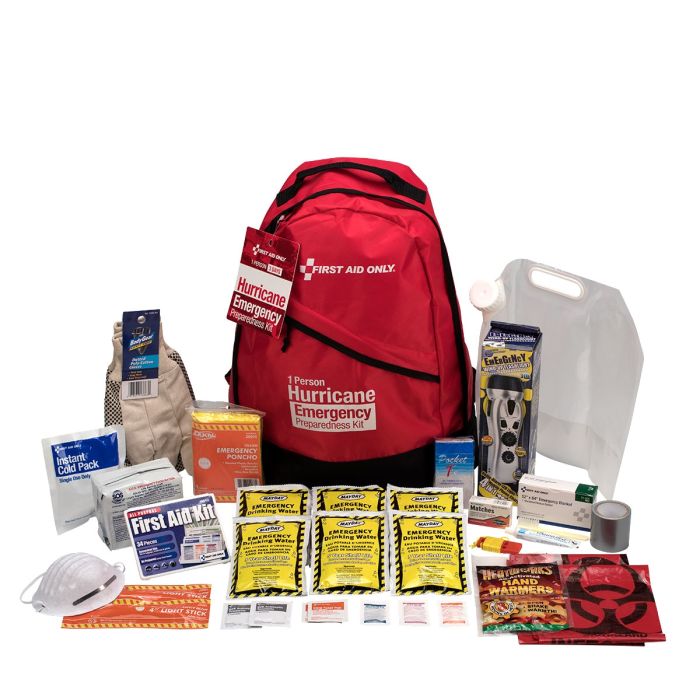Be Ready for Anything: Emergency Preparedness Tips for each Circumstance
Be Ready for Anything: Emergency Preparedness Tips for each Circumstance
Blog Article
Mastering the Art of Emergency Situation Readiness: Professional Tips
Whether it be an all-natural disaster, a clinical emergency situation, or a sudden dilemma, being prepared can make a considerable distinction in the result. Grasping the art of emergency situation readiness needs a mix of understanding, preparation, and tactical reasoning.
Importance of Emergency Situation Preparedness
Emergency situation preparedness is a crucial aspect of making certain the safety and well-being of people and neighborhoods in the face of unexpected disasters and emergency situations. EMERGENCY PREPAREDNESS. Being prepared can significantly mitigate the effect of natural calamities, mishaps, or other dilemmas that may develop. By having a well-balanced emergency plan in place, communities and people can react efficiently, potentially conserving lives and decreasing damage
One vital reason that emergency readiness is very important is that it aids in lowering panic and confusion throughout a crisis. When people recognize what to have and do practiced emergency procedures ahead of time, they are extra likely to continue to be calm and make logical decisions in stressful situations. This can result in a more well organized and effective reaction, aiding in the defense of lives and home.
Furthermore, emergency situation preparedness cultivates strength within neighborhoods. By investing time and sources into readiness measures such as training, drills, and facilities improvements, communities can recuperate quicker after a catastrophe. This strength is important for long-term healing and sustainability, guaranteeing that neighborhoods can withstand future emergency situations.

Structure a Comprehensive Emergency Strategy
Taking into account the essential function emergency situation readiness plays in reducing the impact of catastrophes and promoting neighborhood strength, the foundation for effective feedback lies in developing a thorough emergency situation strategy. EMERGENCY PREPAREDNESS. A thorough emergency strategy offers as a roadmap for companies and neighborhoods to successfully coordinate resources, reply to crises, and guarantee the safety and security and well-being of individuals throughout emergency situations
Key elements of a comprehensive emergency strategy consist of risk evaluation, recognition of possible threats, facility of interaction protocols, classification of responsibilities and roles, and routine training and drills. By carrying out detailed risk evaluations, companies can recognize susceptabilities and prioritize areas for reduction. Establishing clear communication protocols guarantees that information is disseminated efficiently during emergency situations, facilitating timely decision-making. Marking responsibilities and functions clears up the chain of command and advertises a collaborated reaction effort. Regular training and drills aid acquaint individuals with emergency procedures, guaranteeing a swift and reliable feedback when a situation happens. Eventually, a detailed emergency situation strategy is instrumental in enhancing preparedness, reaction abilities, and general durability despite calamities.
Vital Materials and Resources
When getting ready for possible catastrophes, making certain accessibility to crucial products and sources is paramount for reliable emergency feedback and strength. Equipping up on non-perishable food items such as canned goods, healthy protein bars, and completely dry products is important to sustain people and family members during times of crisis when accessibility to fresh food may be limited (try this). Furthermore, keeping a sufficient water, with a minimum of one gallon per individual per day for a minimum of 3 days, is important for hydration and hygiene needs
Fundamental clinical products consisting of plasters, antiseptics, drugs, and a very first aid kit are essential for addressing injuries and ailments that may occur during emergency situations. Flashlights with added batteries, a multi-tool, and coverings must likewise be included in emergency supply packages to supply light, aid in navigation, and ensure heat and convenience.

Communication Strategies Throughout Emergencies
Effective interaction techniques play an essential role in making certain timely and accurate circulation of info throughout emergency situations. Concise and clear interaction is important for collaborating response initiatives, offering instructions to the general public, and keeping everyone educated about the advancing circumstance. One key approach is to establish numerous interaction networks to get to a broad target market. This may consist of using message signals, social media sites updates, public announcements, and traditional media electrical outlets.
Throughout emergency situations, it is necessary to mark an agent or a main interaction team to make sure consistency in messaging and avoid confusion. This assigned individual or team ought to be trained in dilemma interaction and capable of supplying info in a tranquil and comforting way. In addition, developing a system for two-way communication can help gather real-time comments from the impacted people and resolve their demands better.
Moreover, utilizing innovation such as emergency situation notification systems and interaction applications can streamline the dissemination of important information and facilitate rapid action efforts. By carrying out these interaction techniques, neighborhoods and companies can improve their emergency preparedness and action capacities, eventually saving lives and lessening the effect of calamities.
Training and Practice for Readiness
A vital facet in guaranteeing preparedness for emergency situations is the execution of normal training and session to boost feedback capacities and preparedness - see this here. Through regular training, emergency situation responders can acquaint themselves with procedures, tools operation, and decision-making procedures, ultimately improving their performance during situations
Training sessions need to imitate realistic emergency situations to provide responders with hands-on experience in a regulated environment. These simulations enable people to exercise their roles, test communication systems, and determine areas for improvement without the pressure of an actual emergency situation.
Routine drills and workouts additionally aid teams build communication and coordination, making sure that everyone recognizes their duties and can work together flawlessly when confronted with a dilemma. Furthermore, debriefing sessions following training exercises permit positive comments and the possibility to gain from any mistakes made.
Final Thought
To conclude, grasping the art of emergency preparedness requires a detailed strategy, vital materials, reliable interaction strategies, and routine training. By prioritizing preparedness and taking aggressive procedures, individuals and neighborhoods can much better respond to emergency Full Report situations and reduce potential threats - EMERGENCY PREPAREDNESS. It is important to remain informed, stay prepared, and continually enhance emergency situation feedback methods to guarantee the safety and health of all people included

In final thought, mastering the art of emergency readiness requires a thorough plan, important supplies, effective communication techniques, and routine training.
Report this page